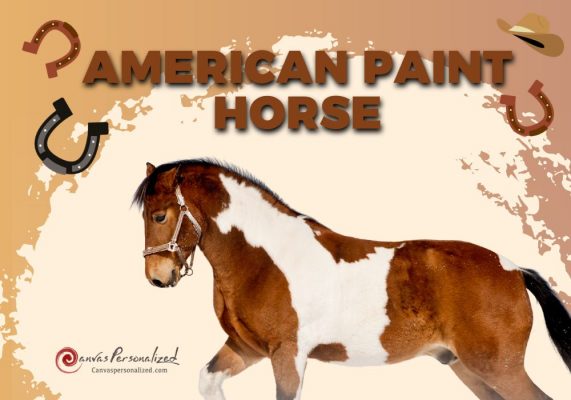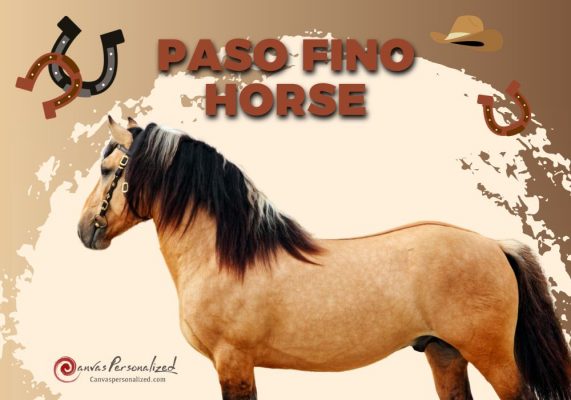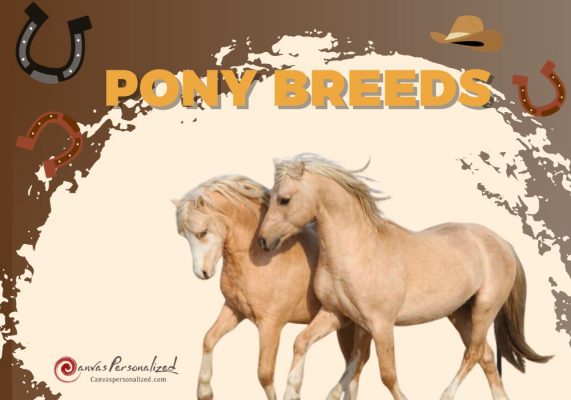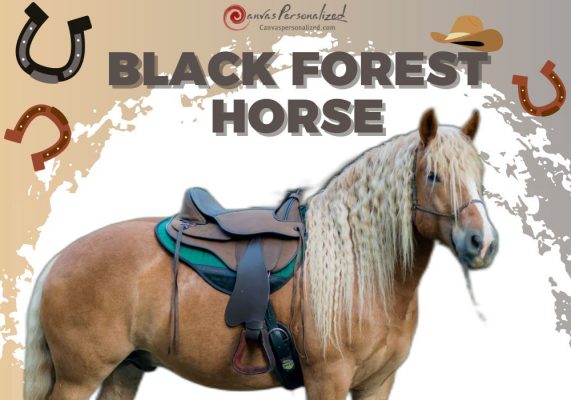Gypsy Vanner horses are rapidly becoming more popular these days. They are lauded for their pleasant personality, striking appearance, and unique coats. Although this Gypsy Vanner horse breed was bred to pull caravans, it doesn’t mean you can’t ride it. Because of their laid-back temperament, Gypsy Vanners are good for kids and beginner and experienced adult riders. Check out Canvas Personalized Blog to learn more about this up-and-coming superstar horse pet!
Gypsy Vanner Horse Breed Key Figures
- Weight: 1,000 to 1,7000 pounds
- Height: 12.2 to 16 hands
- Best for: Riding and driving, and ideal for both beginner and advanced equestrians
- Lifespan: 20 – 25 years
1. The Background Of Gypsy Horses
The Gypsies of Great Britain are credited with creating the breed of horse known today as the Gypsy Vanner because they needed a sturdy steed to draw their traveling caravans. They were searching for a docile, trainable horse with plenty of strength. For size and power, the Gypsies relied on the Shire and Clydesdale breeds. And they also incorporated the Dales’s and Fell pony for agility and speed.
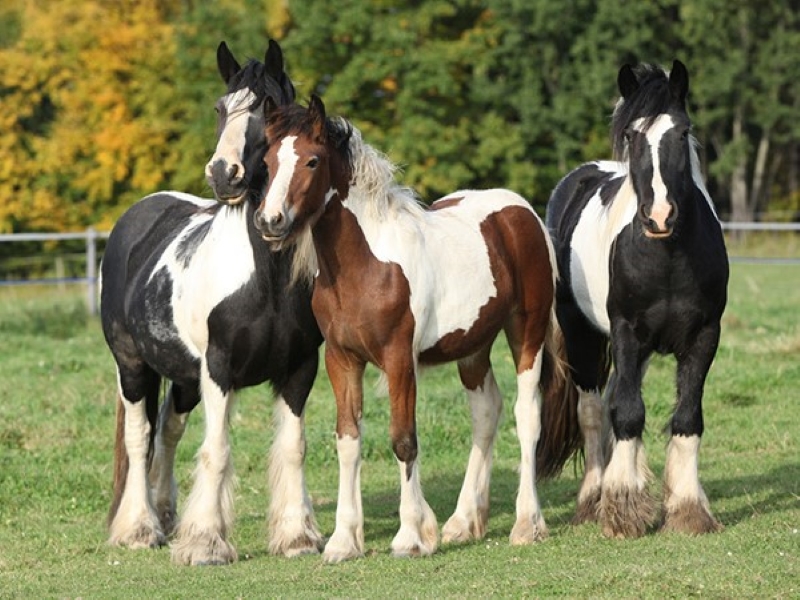
Over time, these horses developed into a more polished breed. In 1996, the first Gypsy Vanners were imported to the United States. The Gypsy Vanner Horse Society, the breed’s official registration, was founded in the same year.
2. Vanner Gypsy Horses Appearance
This breed typically ranges in height from 13 to 16.2 hands. In general, shorter horses are favored. Since they are smaller, they use less food, making them more cost-effective. They’re just as stocky and powerful as the big horses. Moreover, caring for a giant horse costs more than average since the Vanner often has more stringent nutritional needs than the standard horse.
No one color or pattern defines the Gypsy Vanner breed. They come in a wide variety of coat patterns and plain colors. However, Piebald and skewbald coat patterns are rather frequent in this breed. And in particular, you will observe the following:
- A skewbald horse has white markings on otherwise non-black coat color, such as chestnut, bay, or any other color.
- Tobiano horses are characterized by their dark coat color and white markings.
- Blagdons are commonly described as darker horses with a white blaze on the belly.

Despite this, breed registries allow horses of any hue and with any markings or patterns, as the breed is not based on color. Heavy feathering on Gypsy Vanner horses is a distinguishing feature, and it begins about the knees and hocks. Common characteristics also include a long, thick mane and tail. Extra time and effort are needed to care for and style such a substantial head of hair, particularly before a public appearance.
3. Diet and Nutrition
The Gypsy Vanner needs a special diet since they have a slower metabolism than the average lightweight riding horse. Due to their slower metabolism, they are more likely to have weight gain and other metabolic disorders.
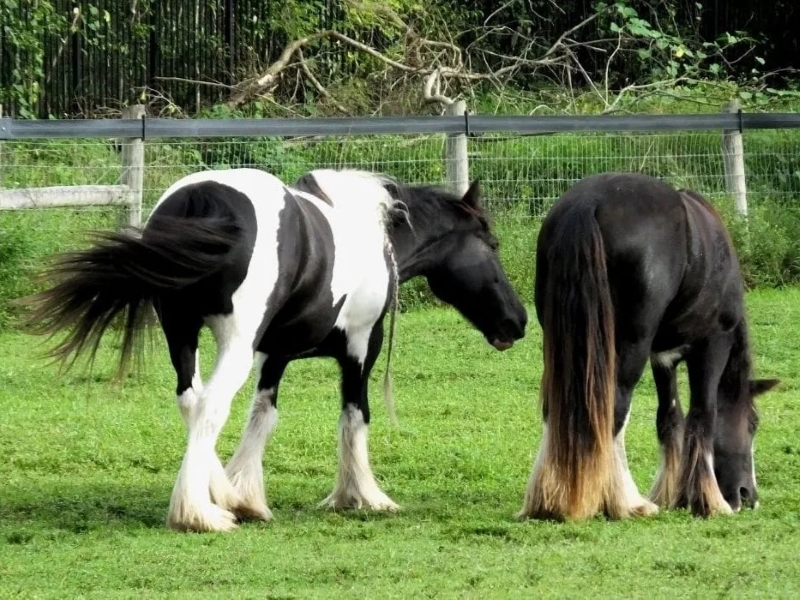
Gypsy Vanners are often fed a high-fat, low-sugar diet to prevent these diseases. Regarding their diet, many of these horses fare better on high-quality hay and a ration balancer than they would on a regular feed concentration. The use of grazing muzzles by certain Gypsies may be necessary this summer if they spend time in lush fields.
4. Gypsy Horse Breed Grooming
To maintain their health and comfort, Gypsy Vanners require extensive grooming. The long manes and tails of horses require special care, especially in wet and muddy environments. Braiding their horses’ manes is a common practice for many owners since it helps maintain the manes clean and free of knots.
Even the tails need special care to avoid damage and maintain cleanliness. Therefore Gypsy Vanner owners frequently resort to mud knots and tail braids.
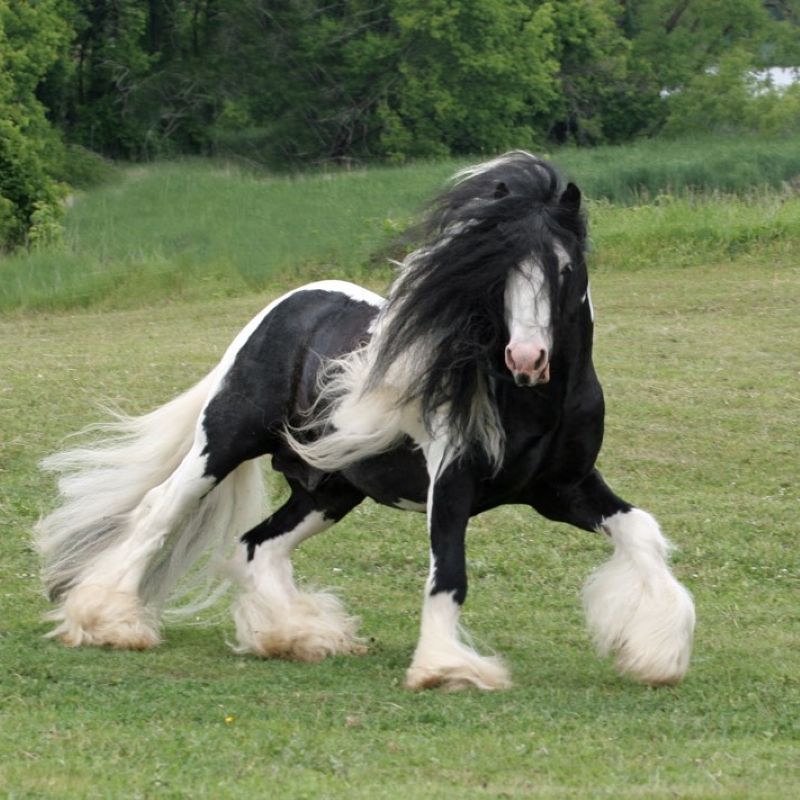
Detangling and grooming the Gypsy horse’s feathers regularly is also necessary. Preparing a horse for a show is more difficult if its lower legs are white, making the feathers more susceptible to stains. Grooming the feathers regularly is also important so that owners can see problems (such as cuts or the start of scratches) on the lower legs right away.
5. General Health and Behavior Issues of Gypsy Vanner Horses
Health Issues
This hardy breed may be kept in excellent health with routine grooming and nutritious food, but some issues require extra attention:
- Examine the lower legs for evidence of scratching since this can lead to inflammation and lameness.
- Chronic progressive lymphedema is a chronic disease that causes extreme swelling in the lower leg of horses and has no known treatment.
- Check for crusty growths on the legs; these are signs of overproduction of keratin. To avoid bacterial and fungal infections, they should be eliminated.
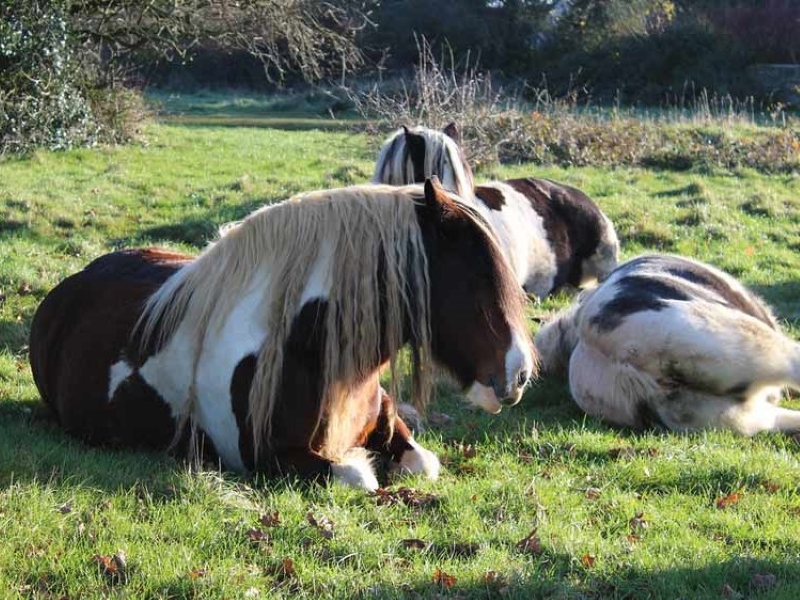
Behavior
Gypsy vanners are well-known for their kind and friendly attitude, as well as their high levels of intelligence, patience, and wisdom. Because of its mild temperament, the Gypsy Vanner is a great choice for a family horse. The first horses were selected for their abilities to work and look. Later, though, more horses were to be bred in a temperament of calm and openness. If there’s one thing that all Gypsy Vanner horses have in common, it is a mutual love for people.
Though they are highly loyal to their owners, trainers, and handlers, they are also open to forming new relationships with others virtually all the time. They are intelligent, willing, and want to please those they work with. This gypsy vanner horse breed’s intelligence and willingness make it very adaptable among horses.
6. Are Gypsy Vanners Appropriate for You?
The Gypsy Vanner horse breed is highly recommended as the best horse for first-time riders and inexperienced owners because of their amiability and general steadiness. Even though it is usually used to pull wagons and carts, it is a short, stocky horse that can handle cold and wet weather well. And you don’t have to worry about it hurting children or other animals if you keep it around them.
But this breed is expensive ($10,000–$40,000). You can find a good Gypsy Vanner horse from a local breeder or a private seller. Also, they have strict nutritional needs and a high bar for cleanliness. Before you get one as a pet, give it some thought!

7. How To Buy Or Adopt A Gypsy Vanner
Because of their increasing popularity, finding them in the United States is getting easier. These horses are expensive—you can quickly get $10,000 or more each. So you won’t find them in rescue cases where you can adopt a horse. The best places to look for a Gypsy Vanner are reputable breeders or private sellers. You can check out the table of reputable horse breeders in the US market below:
| Name | Location | Website | Number |
| Gypsy Gold Farm | Ocala, Florida | https://www.gypsygold.com/ | (352) 307-3777 |
| Wrangler’s Gypsy Horses | Lanesville, Indiana | https://www.wranglersgypsyhorses.com/ | (970) 250-8796 |
| Gypsy MVP | Arlington, Washington | https://gypsymvp.com/ | (214) 415-3213 |
| MHB Gypsy Horses | Lebanon, Tennessee | https://www.mhbgypsyhorses.com/ | (502) 545-1300 |
| Legacy Vanners | Russellville, Arkansas | https://www.legacyvanners.com/ | (530) 391-5608 |
>> Another related post that you may be interested in:
- Spotted Saddle Horse Breed: The Perfect Equine With A Distinctive Look
- Discover The Rocky Mountain Horse: Beauty And Versatility Breed
In summary, if you’re seeking a hardworking family horse and have the resources to care for and train one, Canvas Personalized Blog suggests this breed is for you.




